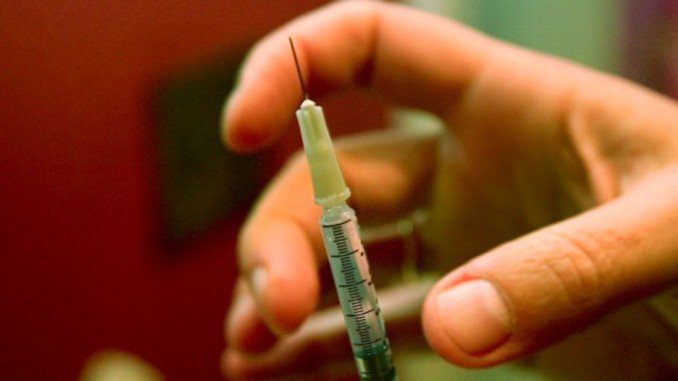
There has been a tremendous increase in heroin possession, use and overdose cases across the country and New York State is no exception.
According to a report released by the Rockefeller Institute of Government late last month, deaths from drug overdoses and chronic drug abuse in New York saw a 71 percent increase between 2010 and 2015. Additionally, the bulk of the problem is seen in suburban and upstate counties rather than New York City where a 45 percent increase was seen compared to an 84 percent increase elsewhere.
According to New Paltz Police Chief Joseph Snyder, New Paltz has also seen such an increase.
Snyder attributes this rise in part due to the rules, laws and education barring individuals from easily obtaining prescription medication. He said that because of these restrictions, heroin has become less expensive and easier to obtain in comparison.
Snyder said that in response to overdose cases, his officers do not arrest anyone with small amounts for personal use at the scene under the Good Samaritan Law.
“We just want to be able to arrive at the scene and try to help and save a life,” he said.
According to the report, heroin-related deaths in Ulster County increased 133 percent between 2010 and 2015. Snyder said that the New Paltz Police Department (NPPD) is working with the Police Chiefs’ Association of Ulster County, an association of law enforcement officers and their supporters formed on February 23,1973 to promote excellence and professionalism in police work. Its inception was intended to gather more information on overdose cases as well as to have a better idea on who the users are based on age, gender, culture and other various factors.
The association is also working to identify what is being mixed with heroin that is causing an increase in death and overdose rates.
“Drug dealers want to make money, so in order to keep prices low and still make a big profit, they cut or blend other substances with the heroin to increase their profit however, what they are using to mix with the heroin can be more deadly than the heroin itself,” Snyder said. “This is where we are seeing an increase in overdose cases.”
Many states have taken steps to combat this epidemic, including New York. According to The Poughkeepsie Journal, Attorney General Eric Sneiderman announced the creation of Suburban and Upstate Response to the Growing Epidemic Initiative, (SURGE), on April 27 targeting gangs and individuals who deal heroin and opioids, specifically in suburban and upstate communities. The attorney general’s Organized Crime Task Force will oversee the initiative.
The Poughkeepsie Journal also reported that SURGE has already broken a drug ring in Syracuse, where 52 people were arrested in “Operation Bricktown,” according to Scheiderman’s office.
“Heroin possession is a crime,” Snyder said. “Small amounts can be possession of a controlled substance as a misdemeanor; larger amounts can be classified as felonies.”
Snyder said that education about the dangers of heroin use is a major piece of the efforts to curb this issue statewide.
“We continue to work with other agencies for information sharing and work on plans and education,” he said. “We also work with our Community Education Coordinator, Phoenix Kawamoto, who is a major asset to our community in getting the education information available.”
The use of naloxone, an intranasal medication that reverses the effects of illicit or prescription opioids, has also increased. According to The Poughkeepsie Journal, in New York State, excluding New York City, naloxone use jumped 30 percent from 7,017 incidents in 2015 to 9,157 for 2016.
Snyder said that all NPPD officers are trained and carry Narcan with them on every shift.
“This has been a major increase on life saving measures and officers have saved several lives since this has been implemented,” he said.
